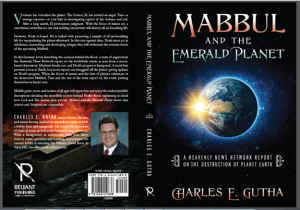There are two voices in English: Active and Passive.
I once attended a long class period where the instructor spent the entire hour trying to impress us to write in the active voice.
An example of passive voice is: “The car was wrecked by Sally.” An example of active voice is: “Sally wrecked the car.” In active voice the order is noun / verb (subject / action: Sally wrecked). The tense of the verb “Be” is present tense (vs. past tense of “was”). Here we see two telltale signs of passiveness: the word “Be” in the form of “Was” and the “ed” on the end of wreck. Also, the prepositional phrase “by Sally” where we have the verb (action) first then the subject (Sally).
The point of the long class I attended was to “always write in the active tense”. It is more exciting. Passive tense is boring.
Now, that is not to confuse past tense and present tense with active and passive. My book took place in the past. However, I take you there as if it is happening now (Past, but active). This gets really tricky when Tom tells the story of the first time he set foot on Earth. Nevertheless, his voice is still active.
“We followed the stream out of the forest. The trees eventually gave way to a large savanna. Striped horses grazed on the grasses. Flamingos and other birds stepped gingerly through the water. River horses with two horns on their snouts – one behind the other – played in the water. A few were eating grass like giant lawn mowers taking a foot wide swath with every bite. El had a story and name for every creature. Each of them had their special qualities and ways.”
While the story takes place in the past, it is still active: We followed, The trees gave way, Horses grazed, Flamingoes stepped, River Horses (Rhinoceros) played, El had; Past tense, but active.
There is another device, I do not know the name of it, where the tense is past, “Tom sped” then supporting verbs become a present participle by adding “-ing”. Tom sped, sprinting toward Nakar’s door.”
There are subtle differences between what I sent the editor and what was finally published. Here, I wish I would have kept the word “sprinting” rather than replacing it with “sprinted”. Although the sentence is in the past tense, it still has in active voice.
Original: “Sir, what’s happening?” Tom shouted as he crashed through the newsroom door, sped through the hallway, clung to the reception desk and slid around the corner. He lowered his head, sprinting toward Nakar’s opened door he stopped just short of the entrance. “The Festival, Sir! What’s happened to the Festival?”
Edited: “Sir, what’s happening?” Tom yelled as he crashed through the newsroom door, sped through the hallway, clung to the reception desk, and slid around the corner. He lowered his head, sprinted toward Nakar’s door, and stopped just short of the entrance. “The Festival, Sir! What’s happened to the Festival?
